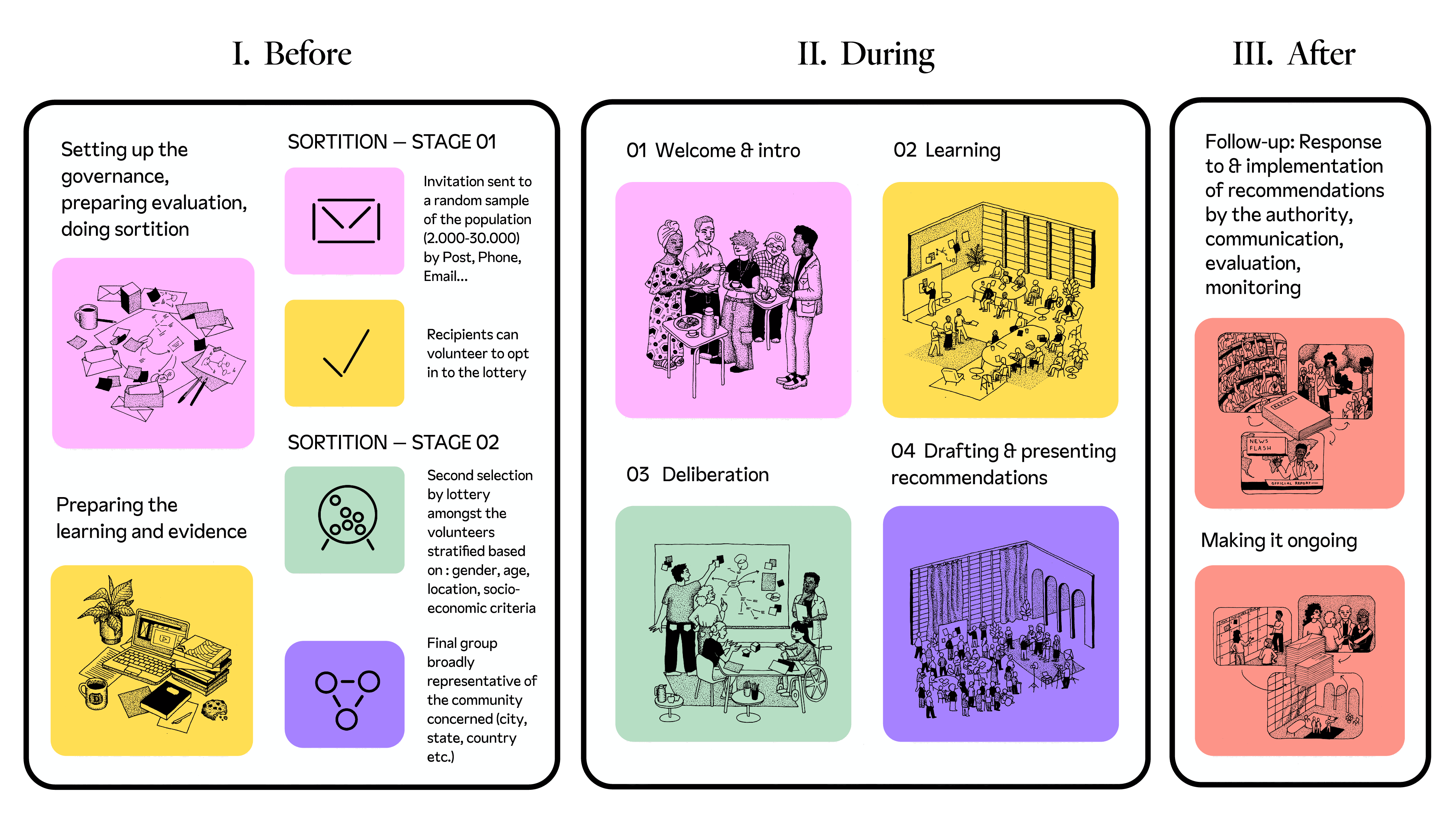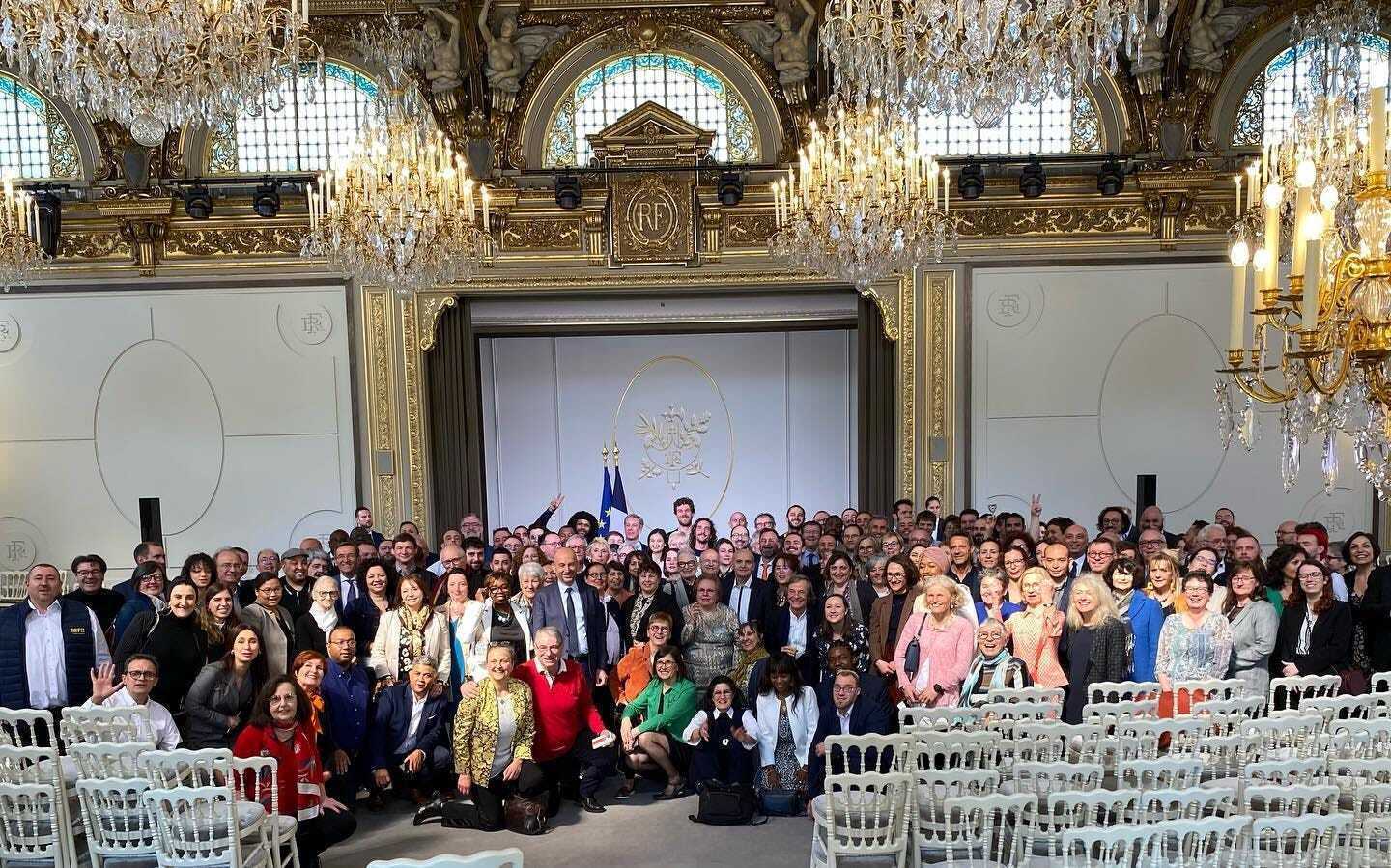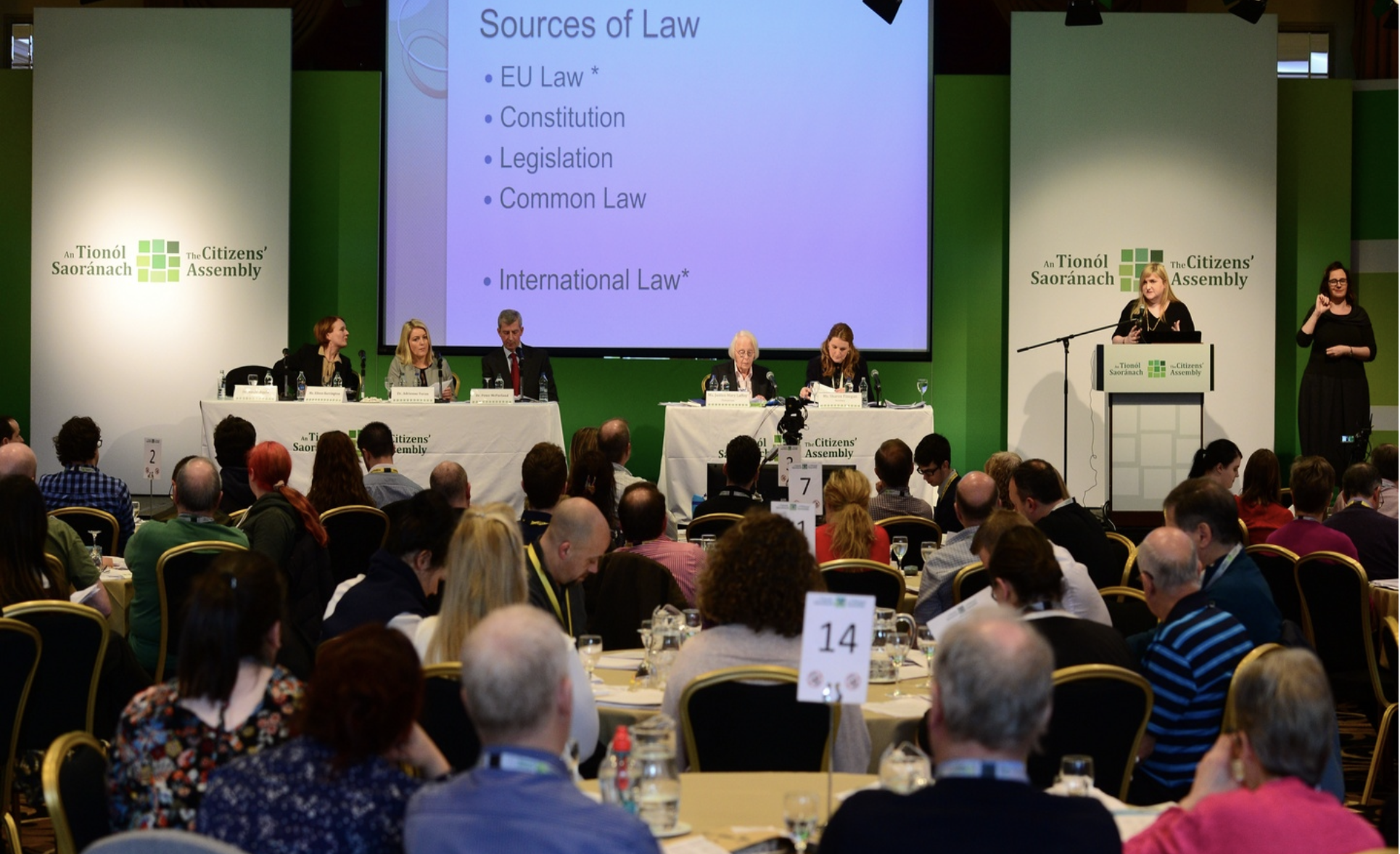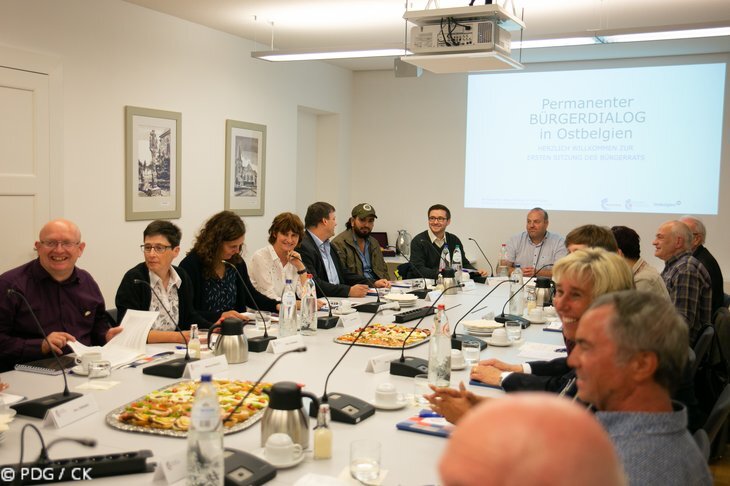
Assembling an Assembly Guide



The Assembling an Assembly Guide is a resource for any institution, organisation, city administration, or policy maker interested in running a Citizens’ Assembly. It is also a useful tool for citizens and activists wishing to learn more about what a Citizens’ Assembly is and how it works, in order to strengthen their advocacy efforts.
This 3-stage guide will accompany you through the different steps of designing, running, and acting on the results of a Citizens’ Assembly. It draws on and points to a curated selection of the best available resources. From deciding how to choose and define an issue, to setting the budget, timeline, and which people to involve, this guide aims to make it a simple and clear process.
Prepared by DemocracyNext, a non-profit, non-partisan research and action institute founded by the people who developed the OECD Deliberative Democracy Toolbox, it embeds the OECD Good Practice Principles of running a high-quality Assembly. The guide will be continuously updated and enriched with new resources.
You can scroll all the way through the guide, or jump straight to these sections:
Whilst we hear endlessly about the crisis of democracy, something remarkable and hopeful has been happening right under our noses: a new kind of democracy is taking root. Over the last few decades, governments have been reaping the benefits of Citizens’ Assemblies - a democratic model that has been tested, widely implemented, and even embedded into public decision-making as new institutions connected to power and underpinned by a legal basis.
A Citizens’ Assembly is a group of people selected by lottery who are broadly representative of a community. They spend significant time learning and collaborating through facilitated deliberation to find common ground and form collective recommendations for policy makers, decision makers, and the community. These Assemblies are sometimes called Citizens’ Juries, Panels, or Councils depending on their size and the country where they are taking place.

Grounded in ancient Athenian practices and proven to work in the modern context, Citizens’ Assemblies have been used over 600 times at a local, regional, national, and international scale.
Citizens’ Assemblies have been strikingly successful in tackling complex policy problems and values-based dilemmas, from constitutional changes around same-sex marriage and abortion, to urban planning, clean energy, and climate change.
As governance systems are failing to address some of society’s most pressing issues and trust between citizens and government is faltering, Citizens’ Assemblies embody the potential of democratic renewal. They create the democratic spaces for everyday people to grapple with the complexity of policy issues, listen to one another, and find common ground. In doing so, they create the conditions to overcome polarisation and strengthen societal cohesion. They bring out the collective intelligence of society — the principle that many diverse people will come to better decisions than more homogenous groups.
OECD research has shown that well-designed Citizens’ Assemblies help public decision makers take hard decisions and enhance trust, because they:
There is no time to waste. The latest V-Dem report has found that advances in global levels of democracy made over the last 35 years have dropped to what they have been in 1986, with 72% of the world’s population living in autocracies by 2022. The 2023 Edelman Trust Barometer found government to be the least trusted institution (50%) compared to businesses (62%) and NGOs (59%).
Amongst the general population, support for Assemblies selected by lottery is high and rising. The 2020 Pew Global Attitudes Survey in France, the UK, the US, and Germany found that, on average, 77% of respondents from the four countries think that it is important for governments to create Citizen Assemblies where citizens debate issues and make recommendations about national laws. The 2021 Sciences Po Political Trust Barometer, covering France, Germany, the UK, and Italy, found that a majority (ranging from 55-71%) think that governments should be obliged to implement recommendations made by Citizens’ Assemblies.
At the heart of a Citizens’ Assembly there are three central principles at work.

Participation rights and responsibilities ensure that everybody has both the possibility and the duty to decide on substantive issues. Participation gives people agency and dignity, recognising that everybody is equally worthy and capable of influencing decisions affecting them and their communities.

Representation by lottery (sortition) enables equality of political power. It is a fair and equitable way to form a diverse, inclusive, and broadly representative group of people. To organise deep and substantial deliberation, the group of people taking part in it must be relatively small, usually ranging from 35 to 150 members. Randomly selecting citizens, while at the same time ensuring demographically varied composition based on criteria such as age, gender, location, and socio-economic background, has the benefit of capturing the diversity of views, perspectives, and lived experiences of different members of society and ensuring broad representativeness of that community. Inherent to the idea is also rotation – that we take turns representing and being represented, since we can’t all be involved in all decisions all the time.

Deliberation involves dialogue and debate, but also implies inquiry, careful listening, consideration of a range of different arguments and opinions in a respectful way. It requires accurate and relevant information and adequate time, so that those deliberating can get to the core of the issue. It creates the conditions for people to grapple with complexity, tap into collective intelligence, and find common ground. It also provides legitimacy to public decisions in a democratic system.

President Emmanuel Macron invited the Assembly Members to receive their recommendations at the Presidential Palace in April 2023. The citizens concluded that France’s existing legislation should be reformed to allow for both assisted suicide and euthanasia. Their recommendations also delve into related details, such as the conditions under which this might be possible, inclusive access, necessary budgetary resources, investment in palliative care, improved conditions for healthcare workers, more research on these issues, and better public information.
President Macron said the citizen Members had “perfected and brought to maturity” the democratic innovation of Citizens’ Assemblies. He promised to hold more assemblies to tackle other issues and said he wants their recommendations to form the basis for new legislation to be introduced by the end of summer 2023.
Read more about the Assembly
DemNext reflections on French Citizens’ Assembly on End of Life

Some of the most prominent examples include the assemblies on the constitutional issues of same sex marriage and abortion. 100 Citizens’ Assembly members recommended the government hold referendums to change the constitution on these issues, and proposed how the legislation should change if people vote for change, which they did in 2018.
Citizens’ Assemblies have also been held in Ireland on climate change and gender equality. The programme of the current government has committed to holding four Citizens’ Assemblies in its lifetime. Two of these Assemblies are already complete, the Citizens’ Assembly on Biodiversity Loss and the Dublin Assembly. The third Assembly on Drugs Use is underway, with the final Citizens’ Assembly to commence in due course.
This is an interconnected series of Citizens’ Assemblies that is attached to the City Council. Each Assembly involves a different group of people selected by lottery to be broadly representative of the population. The first three Assemblies tackled the question of how to address the main urban planning challenges Bogotá is facing to make it a better place to live. The first Assembly had 110 Members selected by lottery who were focused on identifying the broad objectives. The second Assembly had 60 Members (18 of whom were from the first Assembly, for continuity purposes) who turned those objectives into concrete policy recommendations. The third Assembly was comprised of 70 members, 25 of whom were from the previous Assembly, and it further reviewed and detailed those recommendations.

The Citizens’ Council consists of 24 citizens selected by lottery, with an 18-month mandate. It has agenda-setting power, initiating an ad-hoc Citizens’ Panel on the most pressing policy issues of its choosing every year. Each Citizens’ Panel is comprised of 25 to 50 randomly selected citizens who meet at least three times over three months to develop shared recommendations to parliament. The Citizens’ Panels recommendations must go through a parliamentary committee, and the regional parliament is required to debate and respond to the Panel’s recommendations.
The issues that have been addressed through this model thus far have included:
The Ostbelgien Model’s functioning is underpinned by legislation that was passed unanimously by parliament in 2018. This example inspired other similar embedded deliberative assemblies, such as the Paris Citizens’ Assembly and the Citizens’ Assembly on Climate in Brussels, both of which are underpinned by legal texts and function in an ongoing way with rotating Assembly Members.
More about the Ostbelgien Model
Find more examples:
Everyday people taking part in Citizens’ Assemblies report increased understanding of other people’s perspectives, deeper understanding of public decision making, stronger efficacy and belief in their capabilities to be active citizens. In many cases it really is a life-changing experience.
Hear from Assembly Members themselves:
 Next Chapter
Next Chapter
The design process that sets up the deliberation